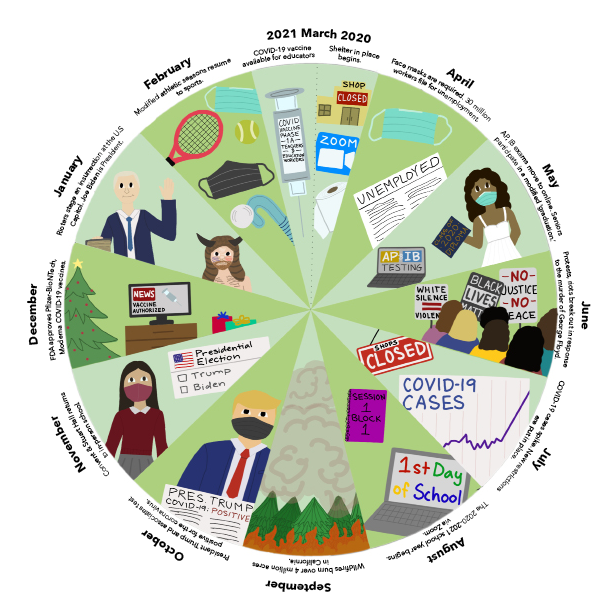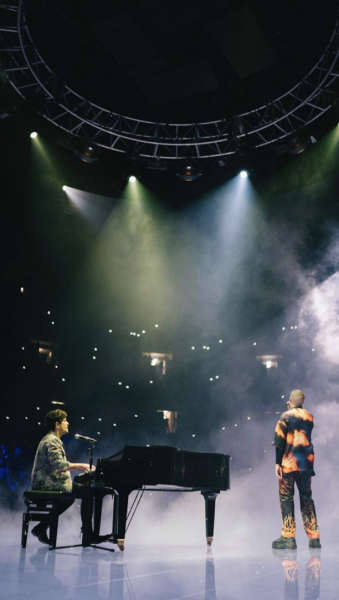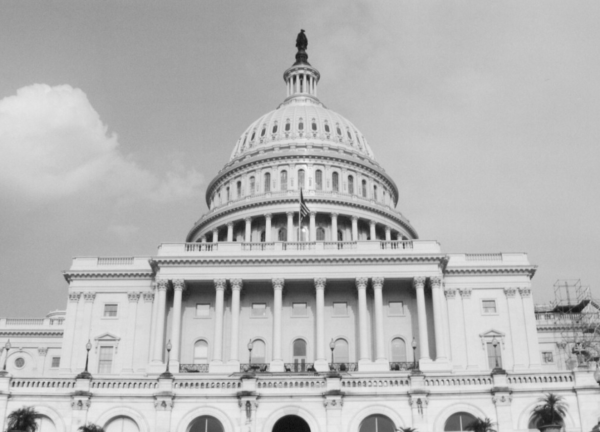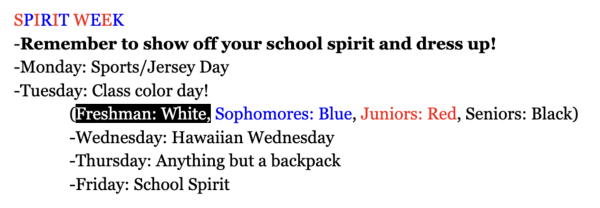Growing into greatness
A year in COVID-19 offers opportunity for growth for young people coming of age
April 12, 2021
ANALYSIS With each generation comes new challenges, and Generation Z is no exception. This year started out with a bang — the insurrection at the Capitol on Jan. 6, a stark change in leadership at the highest level a few weeks later, and the coronavirus persisting — and the newest generation to come of age is learning the value of resilience.
Over 2.5 million people worldwide have lost their lives to the COVID-19, leaving a dark gloom over recent history. Lives, jobs and homes have been lost as the world came to a halt last March. On top of this, students transitioned to either online learning, individual learning, or no school at all.
The pandemic also came with an abundance of downtime, allowing for space and time for creativity that has allowed teenagers to increase their capacity of what they can handle, according to clinical psychologist Lisa Damour, who specializes in the development of teenage girls and young women.
“We build resilience by going through hard times and weathering them effectively,” Damour said. “The pandemic will reset your yardstick for what constitutes a crisis and going forward. Things that in the past that would have felt like an insurmountable crisis, an extraordinary challenge, now will feel pretty small compared to what you have endured and what you have been able to get through.”
The Greatest Generation, born 1901-1927, grew up in the paradox of the roaring twenties and the Great Depression only to encounter World War II in their adulthood. Journalist Tom Brokaw coined the moniker in his book by the same name, referring to the individuals’ tenuous life experiences and devotion to war efforts.
“We had the polio epidemic, which was in some ways completely different but still similar in some aspects,” Louise Mills, grandparent of junior Bridget Mills said. “I think resilience is somebody who can make their way through whatever trauma that’s in their life and try to have perspective on it and try to be positive for what might come next.”
Although the time of adolescence for the Greatest Generation was tense, it was followed by the golden age of Hollywood in the 1920s through ’60s. Literature, visual art, music and cinema all flourished, and the world experienced some of the largest technological developments including radio, telephones and automobiles.
Nearly a century later, some students have been utilizing their spare time during shelter-in-place to put more time into arts and creative activities, according to junior Brit Paulson.
“Over the course of the pandemic I have really reconnected with my artistic side,” Paulson said. “I used to be more into visual art as well as theater and music, but because of school it was hard to pursue my love for visual art like painting and drawing. When the pandemic started I saw it as a great opportunity to reignite my love for painting and began the long term project of painting a blank room in my house.”
Social media has also been a forum for sharing creative endeavors and ideas. Statistics show that time on social media has increased since the start of the pandemic, which can affect users in a paradoxical way, according to Damour.
“For some kids under some conditions on some days, it can help them feel connected, and I think for other kids under some conditions on other days, what they see on social media makes them feel small and left out,” Damour said. “It can even be the same kid on the same day.”
Something as simple as matching a TikTok “sound” with a comedic idea can be an exercise in creativity, according to Paulson.
“When it comes to TikTok, I used to create videos on that platform purely for the entertainment of my large following base I gained after going viral with one of my friends,” Paulson said. “Now, I focus more on creating videos for my own enjoyment and don’t care too much about likes or how good it is.”
Some are building resilience in community settings, and online services such as social media can help some feel less alone, according to Damour.
“Your generation uses social media to cultivate humor and awareness, cleverness and communication like I have never seen before,” Damour said. “I think as kids get older — maybe into 10th grade and above — they’re much better at not taking social media at face value and not feeling left out and they understand that social media doesn’t really tell the whole, real story.”
While there are parallels between the struggles of the current time period and that of past generations, social media is a defining factor in the difference of environment that the modern generation is growing up in.
“Growing up was so different, it was kind of a protected, sheltered environment, we had no technology, no social media and television was just beginning with only a few channels,” Mills said. “At the beginning of the ’50s there were 3 million viewers and there were 55 million at the end — it grew hugely. Many of the shows portrayed an idealistic suburban lifestyle.”
An aspect of quarantine has been the necessity of physical distancing, which allows for more personal time to discover the individuality of each person, seperate from society. Fashion can be an artistic tool to represent one’s individuality, according to Paulson.
“Besides painting, I have also been thrifting a lot over quarantine and upcycling the clothes into something that is more my style,” Paulson said. “My goal is to create clothing that accurately describes my personality and that no one can get anywhere else because I made it myself.”
While teens have had the time to reexamine priorities, individuality, and creativity and harness them all as coping mechanisms, the opportunity for society to return to normal after COVID-19 vaccinations poses an upcoming threat of remembering how to function in a pre-pandemic style world.
“The thing I think we’ll see as we start to move back into the world, is the need to be brave,” Damour said. “The need to remember if you continue to avoid, it’s going to keep your anxiety going, if you can wade in slowly to the things you feel unsure about, or worried about. That wade in the process — not trying to do it all at once — should help as we enter after having been removed from the world for so long.”
For some, the arts have been especially useful as a method of handling heightened emotions during a hectic time. These skills can perhaps help even once the country is completely out of the woods regarding the pandemic, according to Paulson.
“Delving back into my creative side has really helped my anxiety and ADHD because I use it as a form of expression and it almost calms me as well,” Paulson said. “Although most people see the pandemic as a burden and something we wish to overcome, I am very grateful for the opportunity it gave me to reconnect with my art loving self through various forms.”
While returning to normal may be an adjustment, some social scientists say this will provide an opportunity for heightened gratitude, perhaps even provoking a modern day equivalent to the roaring twenties.
“What I am curious about is how long we can savor returning to the world, and how long it is before we just go back to living our lives the way we did before,” Damour said. “I hope, I trust, that there will always be an elevated sense of appreciating getting to be able to go with our friends places and go to people’s homes and have people over.”
One thing that is consistent universally is that all of Gen Z has some — even if it is miniscule — layer of shared experience in growing up during this time. Being able to empathize with each other may be a very valuable skill moving forward, according to Mills.
“Always try to have fun and help people less fortunate than you are, and give of your time and treasure,” Mills said. “ I think trying to stay positive during the pandemic is very important and to listen to the reputable scientists.”
Recent history has been unquestionably difficult, but like the phoenix rising from the ashes, Gen Z has the opportunity to achieve greatness, finding growth in struggle.
“The thing I’m most excited to see coming out of this pandemic is how your generation takes this and feels brave in ways that maybe you might not have before,” Damour said. “How you might feel free in ways you might not have cherished before, and feel empowered to try things that maybe before felt too anxiety provoking or unsure.”











